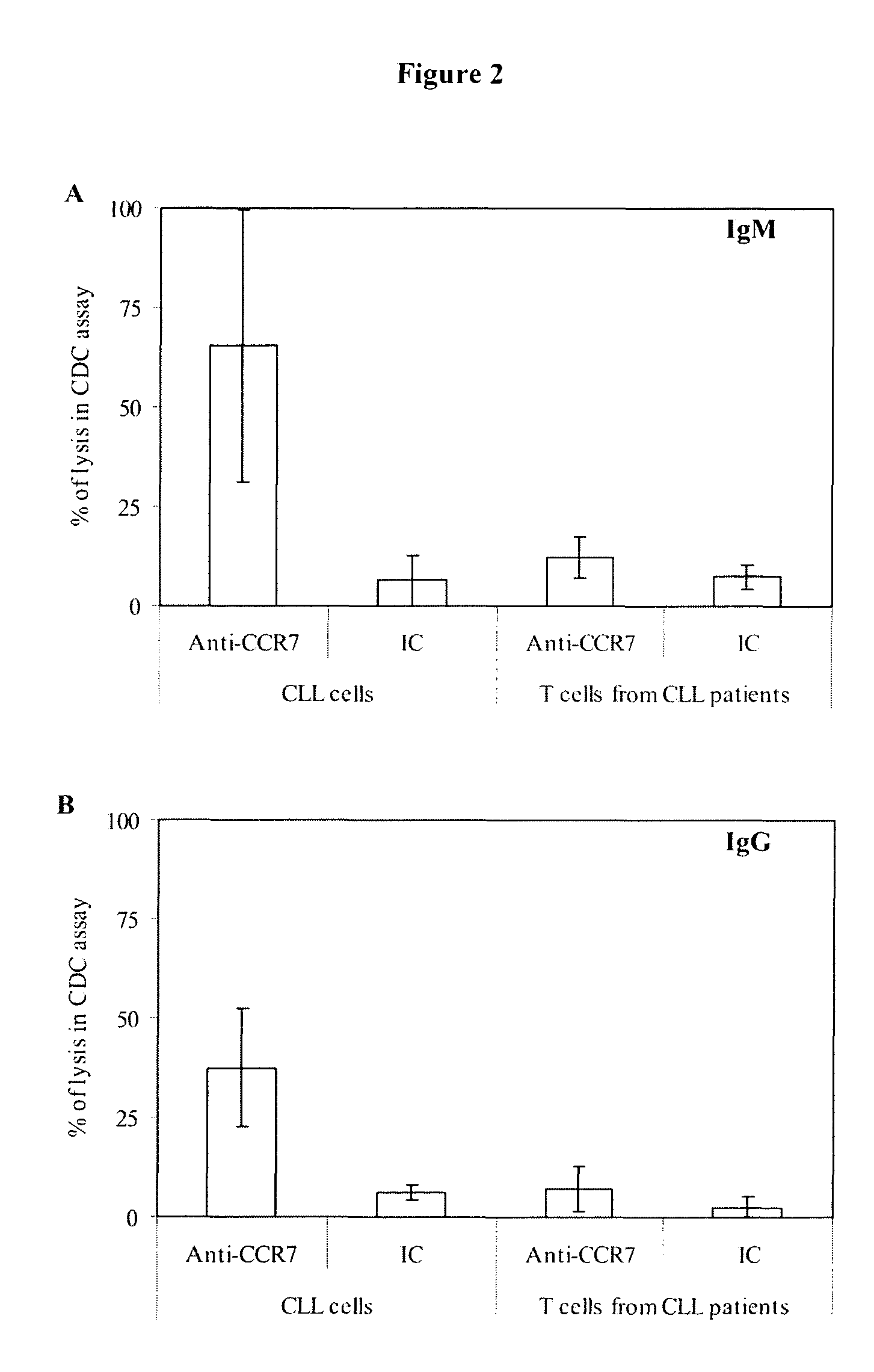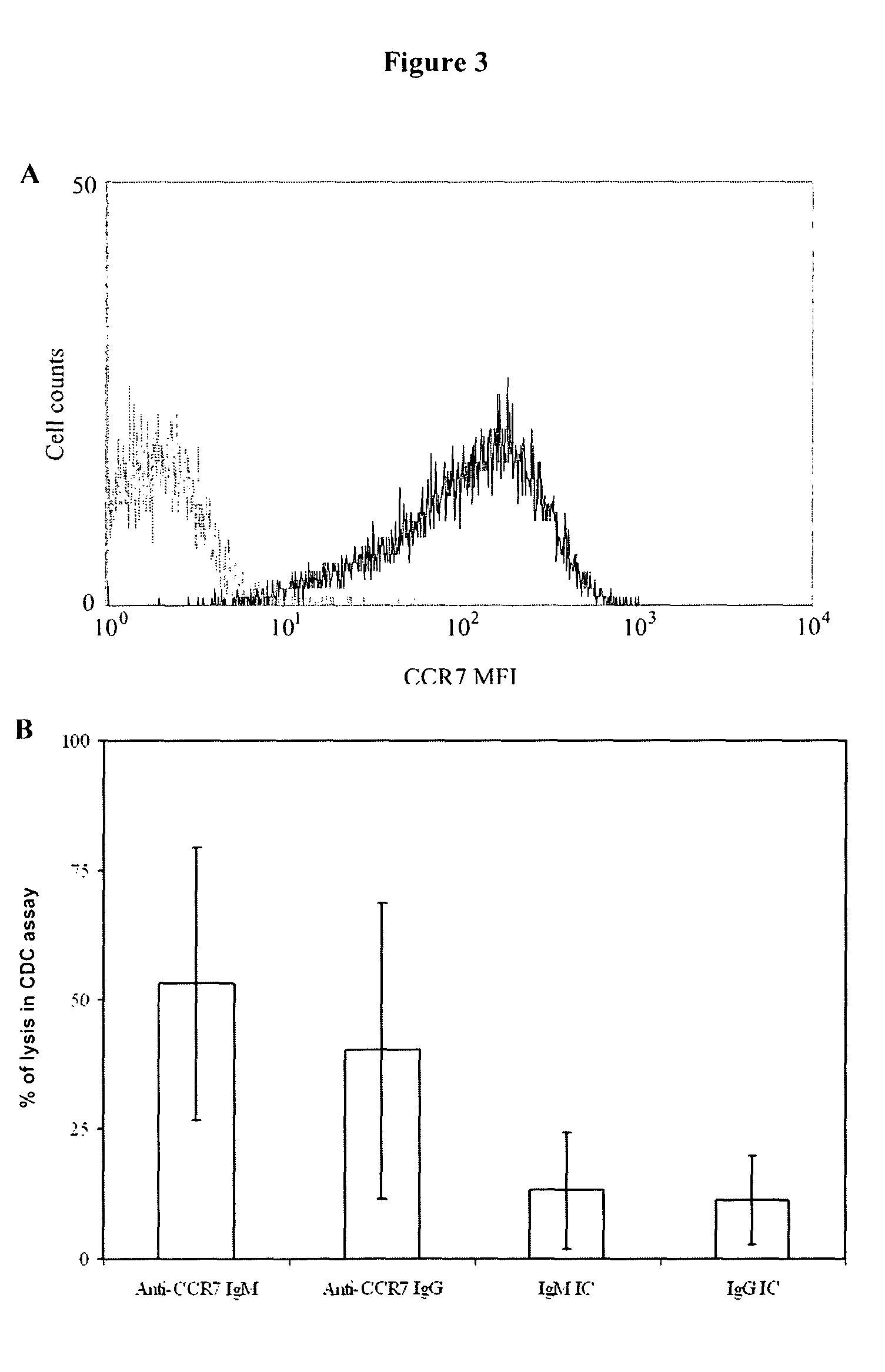Anti-CCR7 receptor antibodies for the treatment of cancer
a technology of anti-ccr7 receptor and cancer, which is applied in the field of cancer treatment, can solve the problems of inability to meet the requirements of treatment protocol, immunotoxin therapy suffers from significant drawbacks, and the desire for a “total cell kill”
- Summary
- Abstract
- Description
- Claims
- Application Information
AI Technical Summary
Benefits of technology
Problems solved by technology
Method used
Image
Examples
example
Antibodies to CCR7 as a Tool for Treating CLL
I. Material and Methods
Samples, Reagents and Flow Cytometry (FCM)
[0143]Peripheral blood samples from CLL (Chronic Lymphocytic Leukaemia) and MCL (mantle cell lymphoma) patients and healthy donors were obtained after informed consent. An initial immunophenotypic characterization of whole blood cells was performed by standard four-colour FCM with monoclonal antibodies (mAbs) directed against the following human surface antigens: CD45, CD19, kappa light chain, lambda light chain, CD20, CD23, CD5 and CD3 (all purchased from BD Biosciences, San Jose, Calif.). Samples with less than 60% of CLL or MCL cells on the mononuclear subpopulation were discarded. Analysis of CCR7 expression was subsequently performed on electronically gated tumour B cells or normal T and B lymphocytes. Phycoerythrin (PE)-conjugated mouse anti-human CCR7 was purchased from R&D Systems (McKinley Place, Minn.). In all cases appropriate isotype controls were included. Immun...
PUM
| Property | Measurement | Unit |
|---|---|---|
| time | aaaaa | aaaaa |
| concentrations | aaaaa | aaaaa |
| surface density | aaaaa | aaaaa |
Abstract
Description
Claims
Application Information
 Login to View More
Login to View More - Generate Ideas
- Intellectual Property
- Life Sciences
- Materials
- Tech Scout
- Unparalleled Data Quality
- Higher Quality Content
- 60% Fewer Hallucinations
Browse by: Latest US Patents, China's latest patents, Technical Efficacy Thesaurus, Application Domain, Technology Topic, Popular Technical Reports.
© 2025 PatSnap. All rights reserved.Legal|Privacy policy|Modern Slavery Act Transparency Statement|Sitemap|About US| Contact US: help@patsnap.com



